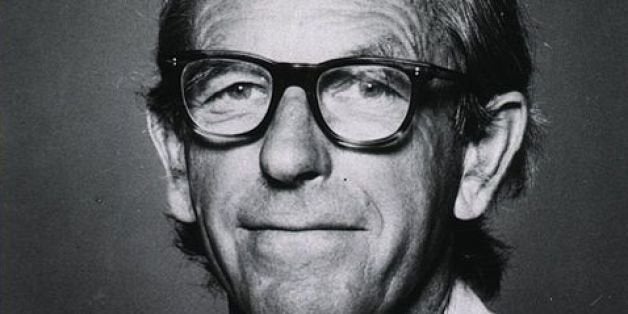
The death of British biochemist Fred Sanger last week gives us a reason to reflect on one of his two discoveries that earned him the Nobel Prize: a method to sequence the genetic code of a segment of DNA.
This method cleverly uses an "imposter" molecule, called a dideoxyribonucleotide, that mimics the usual building blocks of DNA, deoxyribonucleotides. The imposter molecule can be incorporated into a new, replicating DNA strand, but it prevents the strand from further elongation, and replication stops. Analysis of the lengths of DNA fragments generated in such reactions allows the sequence of As, Cs, Gs, and Ts to be "read."
This began a revolution of gene sequencing in the 1980s and was routine in labs across the world. Back then, the method allowed only small segments of DNA to be sequenced at one time, so the sequencing of the entire genome, with its 3 billion nucleotides, seemed out of reach.
But progress was imminent. This year marks the 10th year anniversary of the sequencing of the entire human genome. It was made possible by a uniquely global scientific collaboration and hundreds of millions of dollars over 10 years. All rested upon the foundation of sequencing techniques that Sanger developed.
The Wellcome Trust Sanger Institute, named after this Nobel Prize winner, was a major institutional contributor to the project. Ten years of progress since the Human Genome Project has led to the current status of being able to sequence a human genome in about a day for less than $5,000.
Coincidentally, last week also marked the granting by the Food and Drug Administration (FDA) of marketing authorization to the first high-throughput genomic sequencer, Illuminer's MiSeqDx, for clinical use. This will have enormous impact on medicine and drug discovery.
I met Professor Sanger at a Royal Society event in London several years ago. I remember his gentle and humble personality, which seemed to be at odds with the tremendous impact that his work has had and will have in the future.
The ability to sequence a patient's DNA will bring doctors closer to being able to prescribe as first choice the best drug. This will be a further improvement away from one-drug-fits-all and trial-and-error approaches. The main reason that one drug works for one patient and not for another with the same diagnosis is that patients have different underlying genetic profiles. Until now this has been invisible to doctors. Scientists have begun to understand genetic variations between individuals and how this affects treatment.
For example, some people have genes that cause a person to have a lower capacity for metabolizing specific drugs, and this can lead to toxic reactions. For example, some patients have genes that cause a deficiency of the enzyme thiopurine methyltransferase, and these patients may experience lethal toxicity when subjected to routine doses of chemotherapy. However, knowledge of this genetic variation via DNA sequencing can guide doctors to prescribe lower but still-effective doses to such patients. The influence of genetic variation on a drug's response is called pharmacogenomics, and its application has only begun to be used in the clinic.
Cancer is usually caused by the accumulation of mutations over a lifetime. Knowledge of specific tumor mutations by the sequencing of tumor DNA has led to the development of drugs that target specific molecular defects.
The number of these targeted cancer drugs has greatly increased over the last decade. These include Herceptin (trademark; traztuzumab) for breast cancers that carry mutations in the her2 gene, and Nexavar (trademark; sorafenib) for kidney cancers that carry a mutation in the raf gene. We have learned that some mutations may sensitize the effects of a drug, while others may negate it.
Only cancer patients have a more personalized item than their own genome, and that is the genome of their tumor. The DNA sequencing of an individual's tumor DNA in a clinical setting is anticipated and promises better treatment.
Looking back, we have come a very long way in the 60 years since the structure of DNA was first described by Watson and Crick. Today we can now sequence each and every building block of DNA in an individual in one day, at reasonable cost, and with good accuracy. Looking forward, we can see a future where the application of DNA sequencing will have a great impact on medicine during the next 60 years.